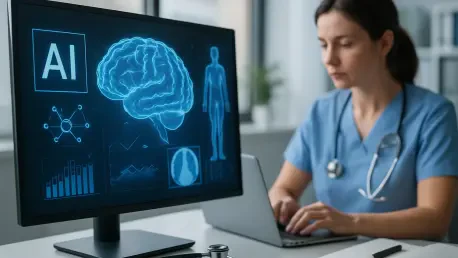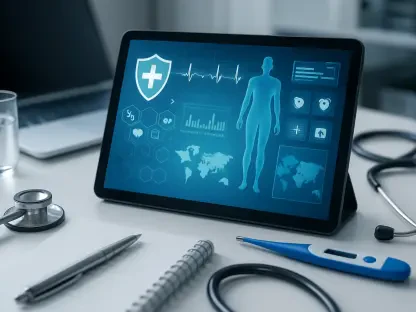I’m thrilled to sit down with James Maitland, a renowned expert in robotics and IoT applications in medicine. With a deep passion for harnessing technology to revolutionize healthcare, James has been at the forefront of integrating cutting-edge solutions to improve patient outcomes and streamline medical processes. In this conversation, we dive into the evolving role of digital innovation in healthcare, exploring how patient-centered strategies, artificial intelligence, and responsible tech deployment are shaping the future of the industry. From personalized care to internal efficiencies, James shares his insights on balancing innovation with ethics and ensuring technology serves the needs of patients above all.
How do you approach keeping patients at the core of digital transformation in healthcare?
It’s all about starting with the patient’s perspective. We need to ask ourselves how a tool or system impacts their experience—does it make things easier, more accessible, or more personalized? My background in consumer-focused industries taught me that expectations are shaped by everyday interactions, like online shopping. So, in healthcare, I focus on designing tech that feels intuitive and supportive, ensuring it addresses real pain points for patients, whether that’s simplifying communication or reducing wait times.
What’s your process for deciding whether to adopt a new technology or pass on it?
I always weigh the value it brings to the patient against the hype. We evaluate if it solves a genuine problem or enhances an existing process without adding unnecessary complexity. If a trendy tool doesn’t align with patient needs or risks overcomplicating things, we skip it. For instance, I’ve turned down flashy solutions that looked impressive but didn’t integrate well with our systems or lacked clear benefits for users. It’s about impact, not innovation for innovation’s sake.
Can you share how AI is transforming call center operations in healthcare settings?
AI has been a game-changer in call centers by helping triage patient needs quickly. It can analyze incoming requests and prioritize urgent cases, ensuring faster responses. Additionally, generating automated call summaries saves staff from tedious note-taking, letting them focus on problem-solving. This boosts efficiency and reduces burnout, which ultimately means better service for patients who are often calling in stressful situations.
How are AI-driven features like real-time translation impacting patient interactions?
Real-time translation, like converting English to Spanish instantly in apps, breaks down language barriers and makes healthcare more accessible. Patients can communicate their needs without delay, which cuts down wait times and boosts satisfaction. We’ve seen firsthand how this builds trust, especially for non-native speakers. Expanding to more languages is on the horizon, and we prioritize based on community needs and usage data to ensure we’re reaching the right people.
In what ways is AI being used to personalize outreach to patients?
AI helps us tailor communication by sending targeted alerts through texts, emails, or apps to address care gaps—like reminding someone about a missed screening. It also matches patients with providers based on their specific health needs and history. This personalization ensures patients feel seen and supported, guiding them to the right resources at the right time, which can make a huge difference in their health journey.
How do you identify the best touchpoints for deploying AI in a patient’s care experience?
We look at where AI can add the most value without disrupting the human element. For some, that’s in a provider’s office with real-time insights during a visit. For others, it’s a helpful nudge via phone or app. Since we often have a long-term view of a patient’s history, we can step in at critical moments, even outside our own platforms, to guide them—whether that’s coordinating with other systems or supporting traditional outreach methods.
What role does AI play in supporting internal teams within healthcare organizations?
Internally, AI tools like advanced chat systems help teams sift through vast amounts of data or documents quickly, streamlining workflows. For example, rolling out something like a ChatGPT-style tool across an organization can cut down research time and improve decision-making. It frees up staff to focus on higher-value tasks, like strategizing or direct patient support, rather than getting bogged down in manual processes.
How do you ensure AI is used responsibly and ethically in healthcare applications?
Responsibility is non-negotiable. We build frameworks around accountability, transparency, and privacy from the start. That means clear documentation of how AI tools work, embedding ethical checks into development, and constantly monitoring for biases or errors. We also prioritize explainability—if we can’t clearly justify a use case to ourselves and our patients, we don’t proceed. It’s about building trust while minimizing risks.
What challenges do you see with AI when it comes to complex patient care needs?
Complex cases are tricky because they often require heavy clinician oversight, which AI can’t fully replace yet. While it can assist by flagging patterns or suggesting options, the human judgment of a doctor is irreplaceable in nuanced situations. The real test for AI in healthcare is figuring out how much it can support clinicians in reaching better outcomes without overstepping into areas where it’s not yet proven.
What’s your forecast for the role of AI in healthcare over the next decade?
I believe AI will become even more integrated into everyday healthcare, acting as a seamless assistant to both patients and providers. We’ll likely see it refine personalized care further, predict health risks with greater accuracy, and enhance accessibility across diverse populations. But the key will be balancing this growth with ethical standards and clinician input to ensure it remains a tool for empowerment, not a replacement for human connection. I’m optimistic, but we’ve got to stay vigilant about getting it right.









